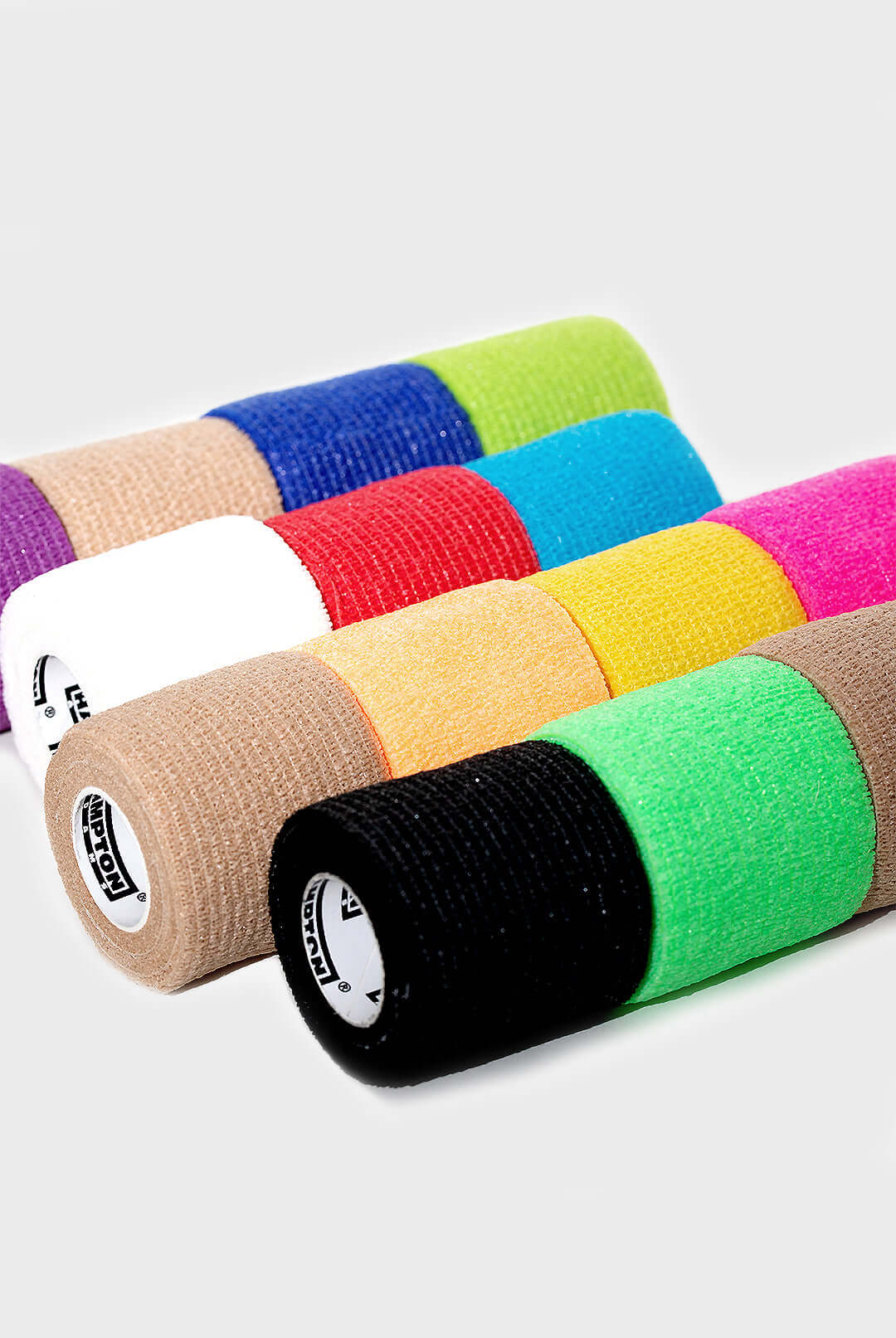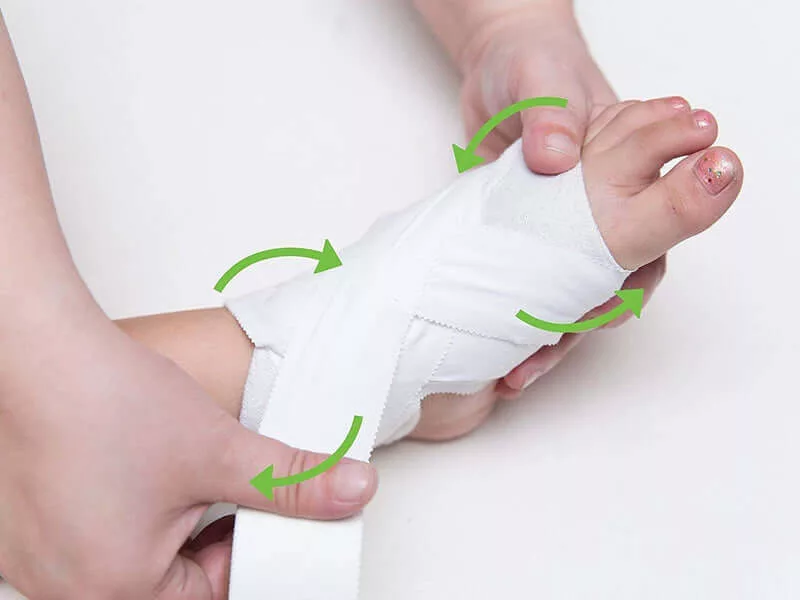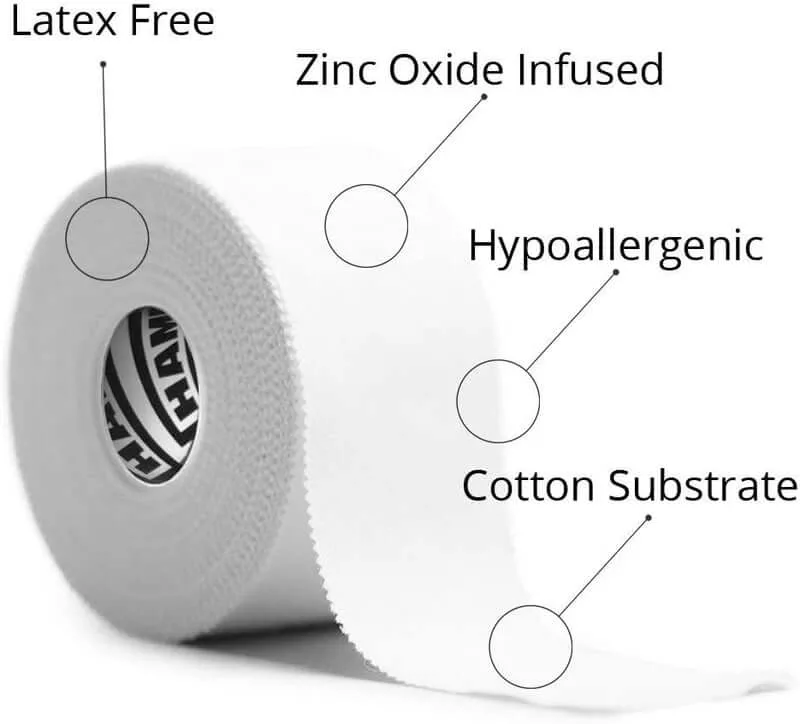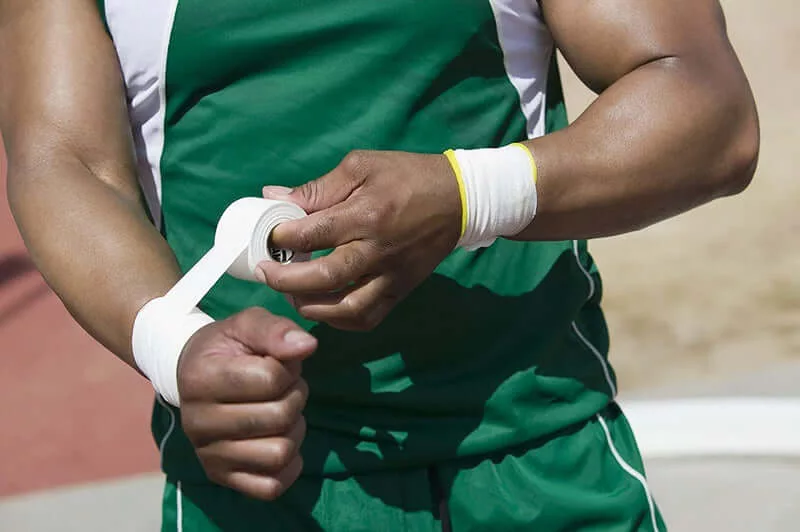Wraps have evolved over millennia from the crude strips of fabric used to protect and manage injuries in Ancient Egypt to the variety of ingenious designs available today. Moreover, they have cemented their place as indispensable in medical therapy, sports, and other related endeavors. Some have now been designed to work on pets, and quite effectively at that. This article discusses the two forms of widely used wraps, Self-adhesive Wraps vs. Traditional Wraps, and their differences.
We differentiate the two wrap types by comparing them using salient criteria contributing to their usability. These criteria are factors that physical therapists, athletes, and even many members of the general populace often look out for during purchase. Read on for more!
What Are Self-Adhesive Wraps?

As the name implies, self-adhesive wraps typically adhere to self during application or use. It may also be known as cohesive bandages or self-stick wraps. They may have emerged into the limelight a few decades ago (in the 1970s), but they have made their mark as products in sports and medicine.
People use them to secure bandages, reduce swelling, and support joints. These benefits result from the material they are made from and their unique composition. Manufacturers typically make self-adhesive bandage wraps from a stretchy and elastic material, such as cotton, polyester, and rubber (latex).
What Are Traditional Wraps?
Traditional wraps, like the Hampton Adams 6-Pack of Hook and Loop Elastic Bandage Wrap, typically consist of materials such as cotton, gauze, or elastic. They aim to deliver support, protection, and compression to different body parts, similar to self-adhesive wraps.
However, the application process for traditional wraps differs from self-adhesive wraps.
Traditional wraps work by wrapping them around the affected region and securing them with a fastener or clips. Traditional wraps rose to the occasion much earlier than self-adhesive tapes but have not outlived their relevance. Due to some core defining features, they still appeal to a population demographic in several fields, including sports, medicine, and the like.
What Are the Differences Between Self-Adhesive and Traditional Wraps?
As they are both wraps, it is unsurprising that some bear the notion that they are very similar in use and application. However, there is much more to their makeup’s intricacies and use. These intricacies define the differences between them. Here are some factors and how they apply to these wraps.
1. Ease of Use: Self-adhesive wraps are significantly more accessible than traditional wraps. It is, in fact, one of the reasons for its appeal to many. Self-adhesive tapes do not require extra materials such as clips, fasteners, or glue. That may complicate or unnecessarily prolong application, as in traditional wraps. In addition, compared to conventional wraps, users do not have to incur expenses on additional accessories when they put self-adhesive wraps to use.



2. Adjustability and Flexibility: These two wraps differ regarding built-in, easy adjustability. Generally, self-adhesive wraps, like the Hampton Adams (14-Pack) 2” x 15 FT Self Adhesive Non Woven Bandage Wrap, are significantly better than traditional wraps. However, traditional wraps possess a unique combination of features that make them slightly more desirable in certain situations, including the following:
Please be aware that the level of adjustability can vary based on the particular brand and the materials utilized in the production of the wraps. Similarly, self-adhesive wraps are marginally more flexible, which is a defining feature of these wraps. It is the basis for their apparent versatility, even in pets.
Manufacturers often design self-adhesive wraps to stretch or mold across various parts of the body or objects. By holding them in place without risk of deformation or loss of effectiveness. Traditional wraps, on the other hand, do not quite possess this remarkable flexibility.
3. Immobilization: Self-adhesive wraps may be hailed as flexible and possessing the ability to be easily molded over the skin, but traditional wraps’ ability to immobilize sites of application and offer sturdy support is superior by a significant degree. It helps deal with situations in which immobilization is of utmost necessity. This makes it a go-to option for managing specific injuries. For example, in severe injuries to joints or limbs that require little or no “movement” for optimal healing and recovery. In such situations, the traditional wraps work better if used well in this respect.



4. Affordability: Traditional wraps, such as gauzes and bandages, are typically less expensive than self-adhesive wraps. This is one of the significant advantages of these wraps over self-adhesive wraps, particularly if one intends to use them for relatively short periods.
5. Cost-effectiveness: In the long run, self-adhesive wraps, however, are significantly more cost-effective than traditional wraps, although they are often more expensive. Here’s why: Manufacturers design self-adhesive wraps to be reusable due to their ability to stick to themselves and their flexibility. There is hardly any wastage of strips, loss of adhesiveness, or deformation that renders them unusable.
The adhesive used on the wraps is a pressure-sensitive adhesive that adheres to surfaces without extra glue or tape. Another contributing factor is the washable material used in self-adhesive tapes, which makes maintenance relatively easy.
In contrast, manufacturers do not typically design traditional wraps for reusability, although there may be exceptions. It is often recommended to replace traditional wraps after each use to ensure effectiveness and maintain good hygiene.
6. Breathability: Another factor differentiating these two is the fabric’s breathability. Traditional wraps often boast remarkable breathability. Breathability implies that air circulation around the application spot is not compromised. This, in turn, prevents the builds of dirt (or sweat) that could cause skin irritations if they stay on for too long.
7. Durability: Traditional wraps are typically very durable products. They often become even more durable than self-adhesive tapes during use, especially elastic bandages.
The tight wrapping typically used with traditional wraps suggests they may better suit “heavy-duty” work than self-adhesive wraps in any given instance. The unique blend of these wraps’ features often causes them to pass as the preferred option in the following scenarios.



- Sporting Activities: Self-adhesive wraps may be marginally preferred in sports, and the reasons are not far-fetched. These tapes are easy to use and flexible, and their application is time-saving. These products may come in handy in settings where time is essential in case of personal injuries.
- First Aid: First aid is to mitigate, manage or stabilize sustained injuries before complete treatment or management by a physician (usually in a hospital setting) is available. Among other benefits, they often become the preferred option when many stocks their first aid boxes.
- Post-Surgery Management: After a rather eventful surgery, there is usually a need to immobilize and stabilize the involved sites for quick recovery. Traditional wraps outperform self-adhesive wraps in these tasks due to their superior abilities to immobilize and stabilize the applied areas.
- Chronic Injuries: Injuries may be grouped in many ways, but depending on how long these injuries last and the time window of recovery, they could be acute or chronic. Chronic injuries last long, are often quite severe and require extended time windows for recovery.
Due to this, they may need long-term support, compression, and immobilization. In this respect, traditional wraps surpass self-adhesive wraps in effectiveness.
Extraneous factors, such as the availability of a particular type (say, self-adhesive wraps) and the unavailability of the other (say, traditional wraps) in a locale, for example, may influence the go-to option for many in some cases.
Also, strictly subjective personal preferences, such as a penchant for aesthetic appeal, may make all the difference in other cases. Nonetheless, these two wraps are practical and essential tools for managing and supporting injured joints and muscles.
Word of Advice
Our self-adhesive wraps stand out from our collection of products! Available in various vibrant and cool colors, Hampton Adams (14-Pack) 2” x 15 FT Self Adhesive Non Woven Bandage Wrap. For example, we design it with a unique blend of features culminating in the ultimate user experience.
Suitable for sportspeople, medical therapists, and fitness enthusiasts.
Looking to kickstart your wrap journey? Contact us on our website at Hampton Adams and browse our catalog to order your self-adhesive wrap and other products that align with your needs today!










